When and how to do walnut pruning?
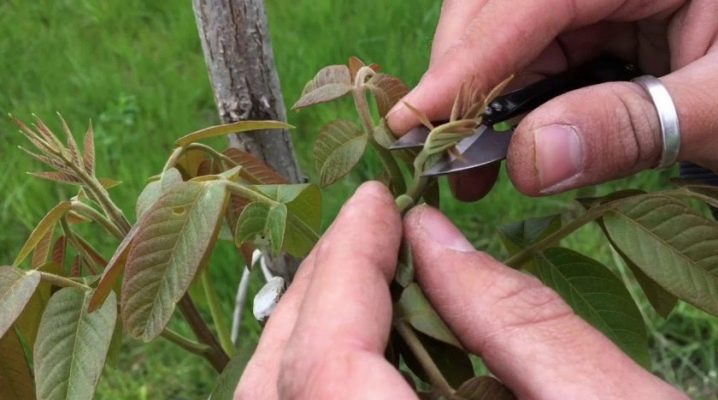
Since walnut trees grow and develop relatively quickly, the first harvest is obtained already in the fifth year after planting. For the correct formation of the crown and as a measure to prevent the development of diseases, it is recommended to timely and correctly prune trees. During the procedure, it is necessary to take into account all the nuances in order to avoid mistakes.
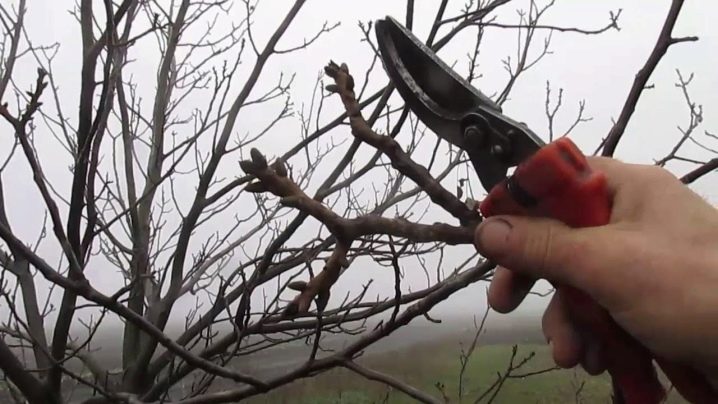
What tools are needed?
It is recommended that you prepare your tools before starting trimming. When they are at hand, the process will be much faster. The following is required.
- Pruner. With its help, it is necessary to remove the thinnest branches, the diameter of which does not exceed 20 mm. To make it clear to novice gardeners - the tool looks like scissors with convex blades.
- Garden saw (not to be confused with a regular saw). The peculiarity lies in the crescent shape of the blade. It is better to choose a tool, the working blade of which varies in length from 30 to 35 cm, as this is the most convenient option.
- Lopper - this is, in fact, the same pruner, but with long handles. Its purpose is to remove branches with a diameter of approximately 50 mm.
- Larger branches will require a chainsaw. The peculiarity of this tool lies in the quick result of the work.
- A garden knife is useful for removing young branches. The same tool can be used to clean minor minor damage. But here it is important not to overdo it, since you can damage the tree very deeply.
- Since most trees are taller than human height, a ladder will be required. The choice of this device must be approached responsibly, since there is a risk of injury. In this regard, the safest option is a stepladder. It is characterized by increased stability.
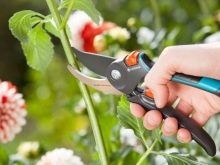
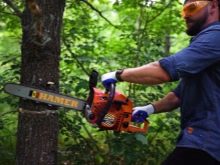
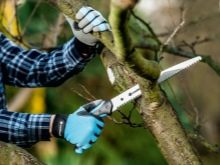
During pruning, there is a chance of getting all sorts of injuries, so it is recommended not to be distracted, to be extremely careful.
You should also remember about personal protective equipment: special glasses and gloves.
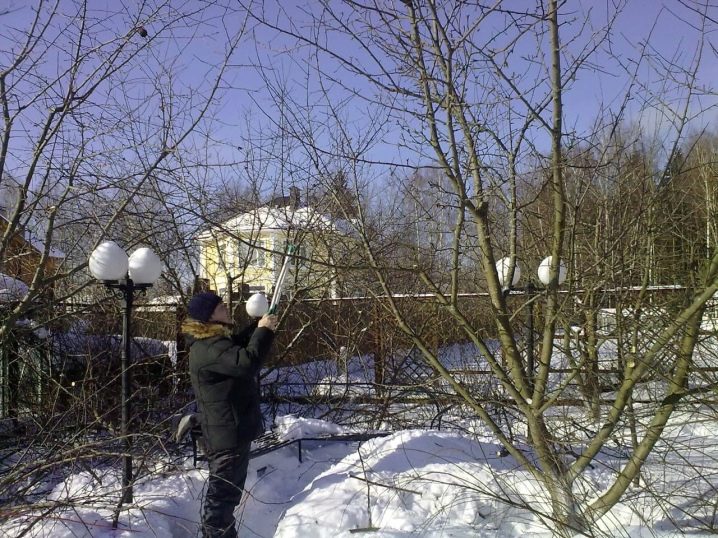
Views
There are two types of pruning: shaping and rejuvenating. The first is carried out in order to properly form the crown of the tree, and the second is designed to remove old branches. Each of them has its own characteristics that should be taken into account in order to achieve a positive result.
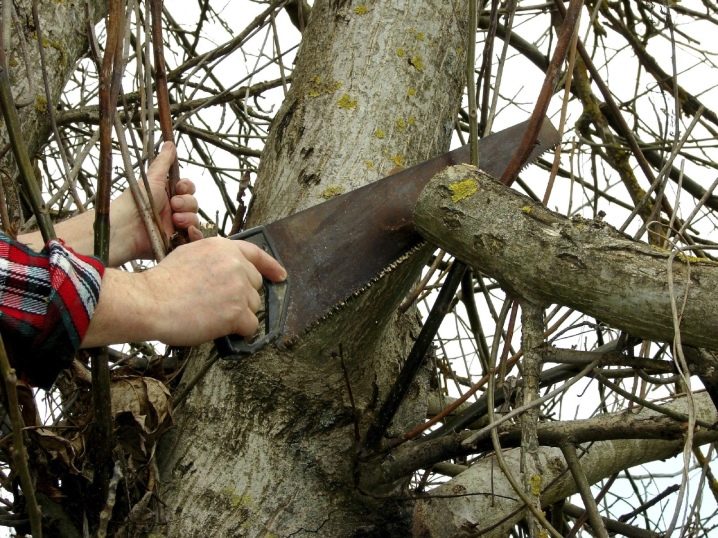
Formative
In the first year after planting, a small crown will form. Its members are 4-5 branches. At this stage, you need to inspect the seedling for any diseases. If they are not there, then only 4-5 branches should be left, and the rest should be removed. In the case when there are diseases, the tree should be left alone until August. At the end of summer, it is required to remove those branches that have the worst appearance, and leave the young and strong ones.
In the second year of a tree's life, the pruning process is more responsible, since it pursues a specific goal, which is to form the crown.
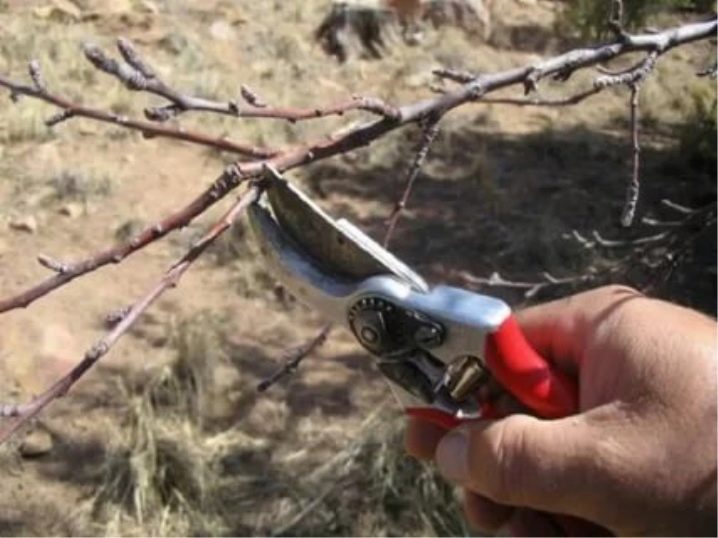
All branches need to be shortened to two buds, since one of them is the leading one, and the other acts as a spare. If both are viable, then the spare should be removed. A shoot will appear from the main one, not exceeding 60 cm in length. It also needs to be shortened to two buds.
After all the side branches are processed, you need to go to the central one. The top conductor is cut in the same way.As soon as the crown is formed, a period of relative dormancy begins for the tree. No more shaping. Pruning is done for sanitary and anti-aging purposes only.
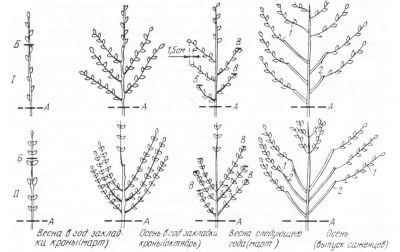
There are three main pruning schemes designed to form the correct crown.
- Layered scheme. Its essence is to leave only three skeletal branches after pruning. An important condition is that they should be approximately 15 cm apart from each other. The main advantage of a tiered pruning scheme is an even distribution of light on all parts of the tree. In addition, foliage has the ability to grow from different sides, giving the crown a round shape. This pruning scheme is best used in late autumn.
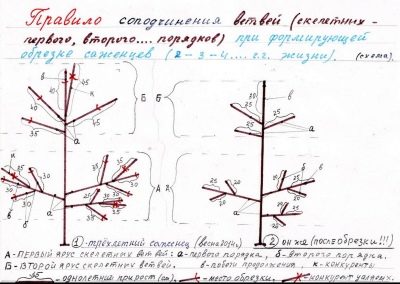
- Leader - This is another option for walnut pruning. Here, the distribution of the main branches follows a spiral. The distance between each loop should be approximately 50 cm. The first three tiers may contain internal branches, but only before the onset of the fruiting period. As soon as the first crop appears, it is recommended to immediately remove them so as not to disrupt the air exchange.
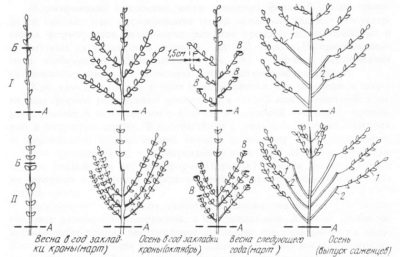
- Cup-shaped. Its main purpose is the convenience of harvesting. The formation of the crown occurs in the shape of a bowl. It is necessary to leave a bole no more than two meters, as well as 3-4 skeletal branches. They should be evenly spaced around the trunk, equidistant between each other. Pruning should be repeated in the fall.

The choice of one form or another of the crown depends entirely on individual preferences.
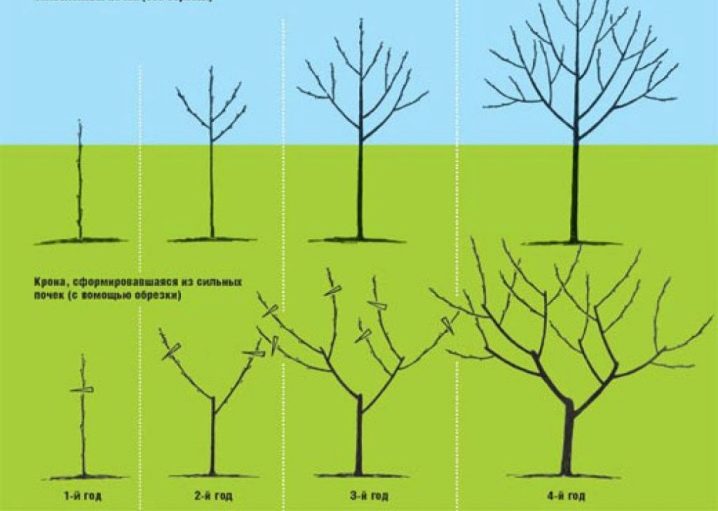
Rejuvenating
This type of pruning is more suitable for a mature tree. The fact is that perennial trees often start up and stop producing the same harvest. Fruit formation occurs only on those branches that are closer to the trunk.
To remedy the situation, it is recommended to periodically perform anti-aging pruning.
It should be done as the old branches are formed that need to be cut. The principle is simple: green branches are left, and dry and old ones are removed.
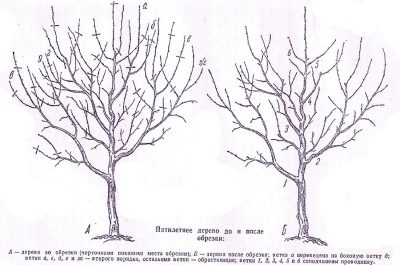
Features of pruning taking into account the term
It is very important to start the pruning procedure in a timely manner. The best time for this business is the very beginning of spring. It is important to focus on the temperature regime here. As soon as the weather is good and the frost stops, you can start the process of crown formation.
Spring pruning of a perennial tree begins by removing dry knots from the sides and top of the tree. The main purpose of thinning branches is to allow air and sunlight to reach all parts of the tree. This is necessary for the proper nutrition of the culture.

Summer
In late spring and early summer, sap is actively moving along the tree trunk, so pruning during this period is better to exclude. Sap flow slows down around mid-July, so manipulations can be carried out.
During this period, it is necessary to remove the crooked branches around the perimeter of the entire crown, which prevent its correct formation.
If the tree was pruned quite strongly in the spring, then summer pruning can be ruled out altogether. Otherwise, the tree can weaken, lose its immunity and get sick.

Autumn
In the autumn, the branches are removed after the leaves have completely fallen off. In the fall, pruning is carried out for sanitary purposes. If there are broken or damaged branches on the tree, they must be removed. If you leave them, then parasites will accumulate at the places of breaks over the winter, which will lead to the development of a particular disease.
It is also recommended to get rid of those branches that are out of order. If the cut lines are too large, they should be disinfected. Autumn pruning is the final procedure of the year. Now the tree must be left alone until spring.
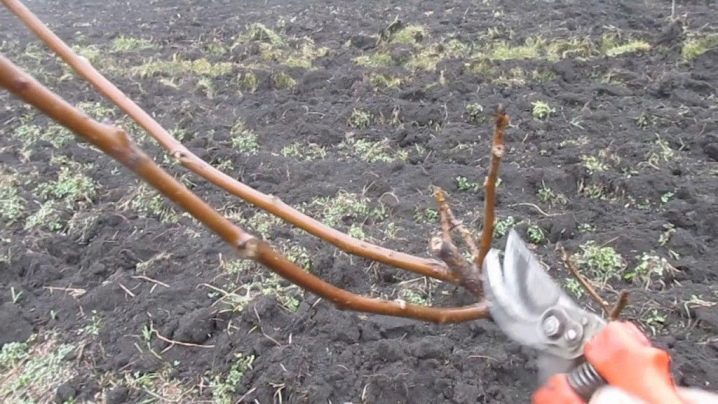
Common mistakes
When pruning walnuts, inexperienced gardeners can make mistakes, which can then be very difficult to correct. The most common ones are the following.
- Pruning branches is done with a blunt and dirty tool. This is actually fatal to the tree. First, by working with a blunt instrument, a person harms the branches of a tree. They are not cut off to the end, you have to break them. Plus to everything - untidy appearance. If you work with a dirty tool, then you can bring in an infection and provoke the onset of any disease.
- Processing of sections with oil paint. In no case should this be done.
- Pruning in early spring or late autumn, when the air temperature drops below zero degrees.
- Removing too many branches.
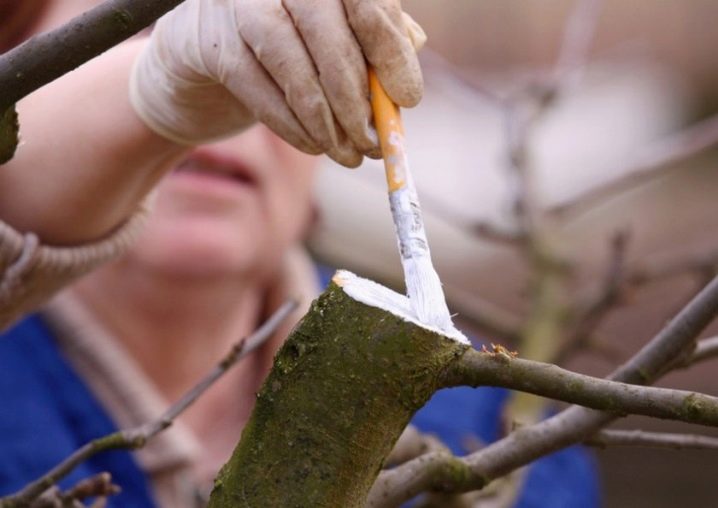
In order to avoid these mistakes, it is important to choose the right and quality tool. It is also recommended to follow the advice of experienced gardeners.
- Before pruning, you need to find out by what rules the tree is grafted. The fact is that after the artificial formation of the crown, vaccination is strictly prohibited.
- In the first year of the tree's life, it is better to shape the crown in such a way that it looks like a bowl. Moreover, the height of the tree itself should not exceed 1 meter.
- Dry and diseased branches are always subject to removal. You should also get rid of those that interfere with stronger shoots.
- You cannot prune the tree in winter and during the period of active sap movement.
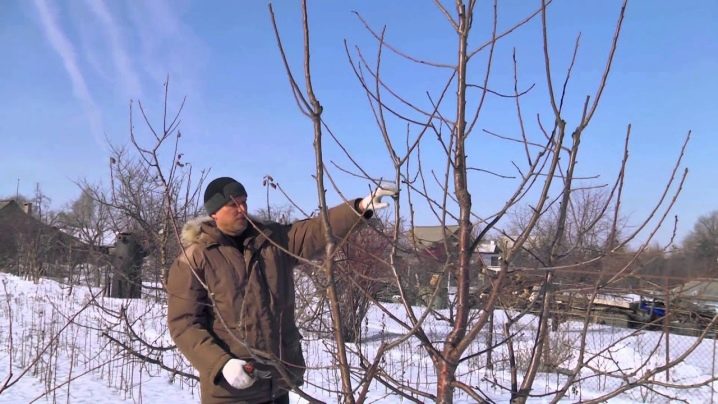
After pruning, the tree becomes weakened, so it needs some care during this period. This is especially true in the fall. To restore strength and maintain immunity, it is recommended to feed the walnut with phosphorus-potassium fertilizers. They should be brought directly under the barrel, in liquid form. Top dressing will not only add strength, but also protect against pests that climb up the trunk.
Some inexperienced gardeners treat the cuts with oil paint. This is fundamentally wrong. Since Soviet times, it has been established to carry out processing with garden var.
This, in comparison with paint, is less harmful, but still it is better not to use var either, or at least buy it in trusted places. Now there are a lot of fakes that are made in artisanal conditions and do not meet the requirements.
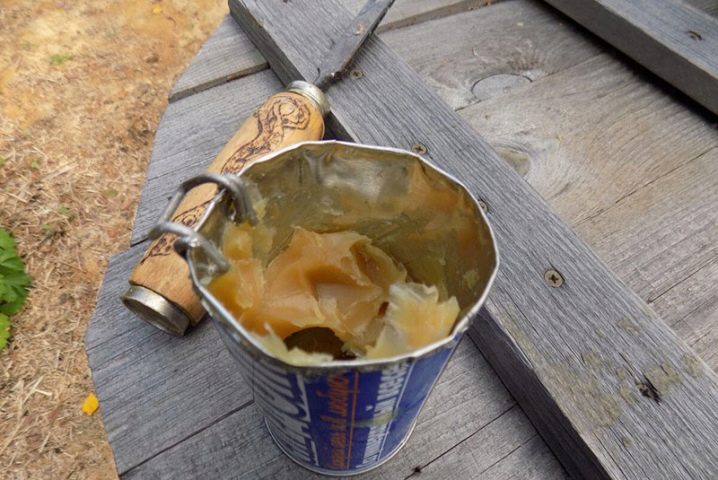
The ban on the use of the above two materials does not mean that the sections should be left unprocessed. There are several products that are most suitable for high-quality disinfection.
- Sugar solution. In order to prepare it, you need to mix 1 glass of warm water and 2 tsp in one container. granulated sugar. When the sugar is completely dissolved, the slices can be treated with sweet water. It creates an invisible film on the surface that prevents the penetration of viruses and harmful bacteria.
- Honey solution. This remedy works on the same principle as sweet water - it clogs the passage for viruses. The recipe is quite simple: in a small bowl you need to dilute 250 ml of water at room temperature and 3 tsp. fresh or last year's honey.
- A weak solution of potassium permanganate. It is recommended to apply it with a sponge or brush.

It is possible to connect two tools together. For example, initially disinfect the cut with manganese, and only then apply a honey or sugar solution.
Some gardeners speak out strongly against any walnut pruning, believing that the tree itself grows well and is able to form a crown on its own. But this opinion is mistaken in most cases. At first, it will seem that the tree really looks neat, all branches perform the desired function.
But when the age crosses the line of 5-6 years, the crown will be disbanded and thickened. Correcting the situation in this case is already very problematic.

Timely pruning is beneficial for the walnut tree, since it promotes normal air exchange, gives access to light, and allows you to grow larger fruits that meet the declared characteristics.
There is one more very important point. Pruned diseased and dry branches should never be left directly under this or other trees and shrubs in the garden. The fact is that they can contain harmful microorganisms and other pests, which will gladly move to healthy trees.
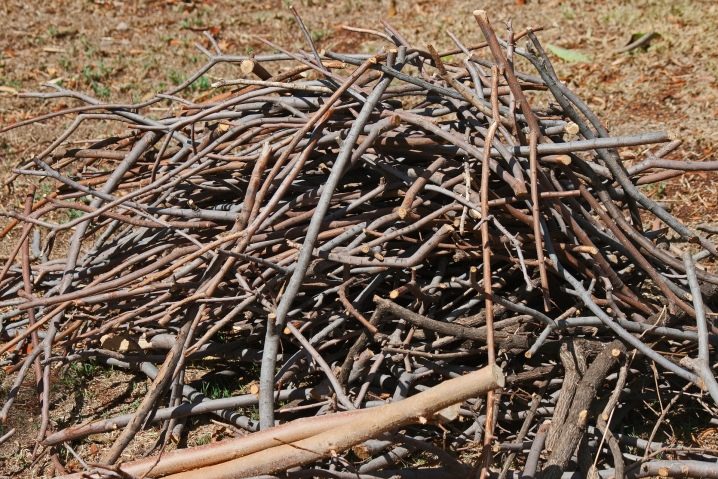
It is best to burn these branches. Thus, there will be no excess garbage on the site, and pests will be destroyed. If for some reason it is not possible to burn it, then it is better to take the branches to the trash can, after cutting them into small pieces and packing them in plastic bags.
To protect walnuts from diseases after pruning, it is recommended to follow preventive measures. In the fall, it is permissible to treat with fungicides. This will help get rid of potential pests. In the spring, it is undesirable to carry out treatment with chemicals, since the future harvest is formed during this period.
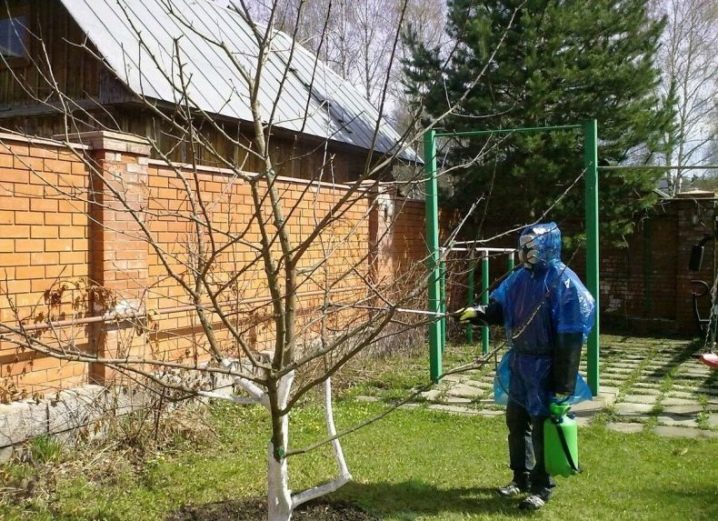









The comment was sent successfully.